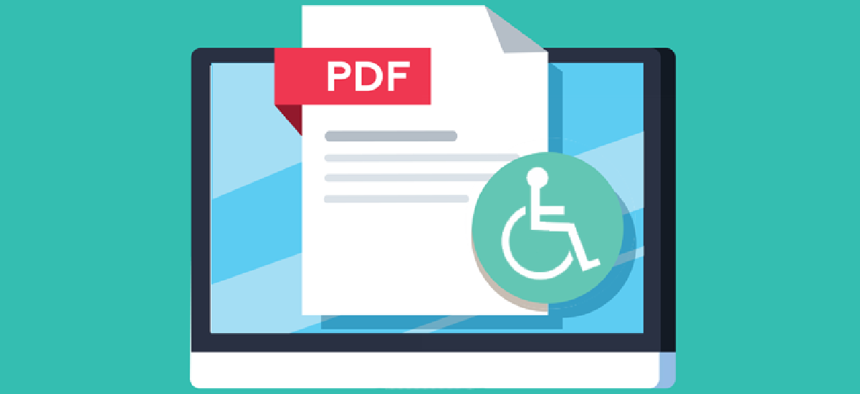Mail-in ballot applications peppered with accessibility issues

A lack of awareness, skills and resources were behind states’ problematic PDF applications, a recent report revealed.
An audit of states’ applications for mail-in ballots found that 43 of 50 had digital accessibility issues.
Most states offer those applications as PDFs. Deque Systems, a company that helps develop accessible web applications and processes, reviewed the files and found problems in every case that might hinder someone with a disability to request a ballot.
“Each one of the PDFs that we assessed had at least one critical problem, [a] barrier to people with disabilities that would stop them in their tracks from completing the application,” Deque CEO Preety Kumar said. (Five states -- California, Colorado, Hawaii, Nevada and Utah -- do not require an application to vote by mail, and Massachusetts and Michigan offer an accessible alternative application.)
For example, the audit found that the PDF Maryland’s State Board of Elections made available was missing some alt-text describing images and had missing or improper semantic markup for headings, forms and lists. Fixing those problems is easy, but states are overwhelmed by preparing for a general election amid a pandemic, so Deque updated the forms and offered them to the states for free.
“I think it’s important to keep in mind that there are lots of different ways voters can access forms and submit forms and access their ballot, and that is one way, and we are pleased that we have made that more accessible,” said Nikki Charlson, deputy administrator of the Maryland State Board of Elections, adding that the state’s interactive online system for requesting a ballot is accessible.
Other problems the audit found included screen readers missing the words “permanent” and “temporary” for addresses so users hear only “Street 1” and “Street 2” twice. “They have no idea why it’s repeating, what it’s meant to be for,” Kumar said. “The context is just completely taken away, and as a result, obviously, they could fill out completely inaccurate information.”
The audit also issues that, while not critical, would unnecessarily inconvenience users. For instance, PDFs that make it tough for a screen reader to discern between juxtaposed lowercase l and i, such as in the word “list.” The result is a mangled “lst,” rather than a clear word.
To conduct the study, Deque used an automated accessibility checker from Adobe, which invented PDFs, and manual testing, such as using screen readers or not using a mouse -- simulating what someone with a disability would do.
“I don’t think it should be a choice between democracy and safety, so we decided rather than just talk about the problem, solve the problem by fixing the PDF, making them fully accessible,” Kumar said. To do that, the Deque team inserted a set of accessibility tags into the problematic PDFs and then reached out to the states’ elections officials.
Officials can see exactly what changed in their PDFs because the company used another Adobe tool that lists all the differences.
Eight states quickly responded to work with Deque in an effort to increase accessibility of the PDFs. Three have implemented the PDFs while a few others have taken alternate steps to increase accessibility.
A lack of awareness, skills and resources emerged as the top three reasons why state election officials said their PDFs had issues.
“In some circumstances where they are aware and have the skills, they simply don’t have the resources -- the bandwidth -- to do that,” Kumar said. “It shouldn’t be a lesser priority than any critical problem because elections are won or lost by a couple of percentage points, and people with disabilities definitely make up more than that percentage.”
According to the Centers for Disease Control and Prevention, people with disabilities make up as much as 26% of the population. What’s more, absentee voting is expected to reach record levels among all voters during this election cycle, largely because of concerns about avoiding crowds during the coronavirus pandemic. More than 75 million mail-in ballots had been requested as of Oct. 12, according to states reporting such data.
Editor's note: This article was changed Oct. 26 to clarify steps taken by states.





